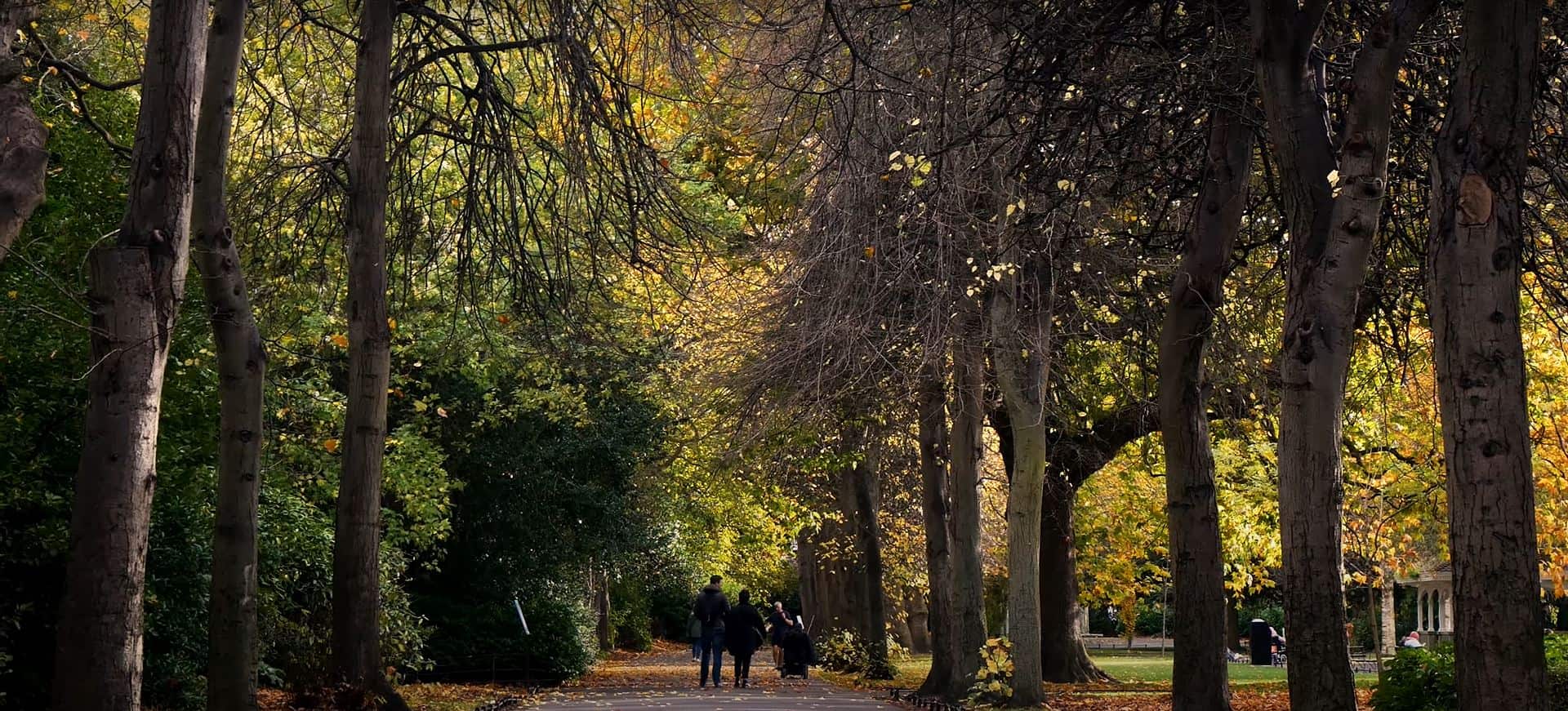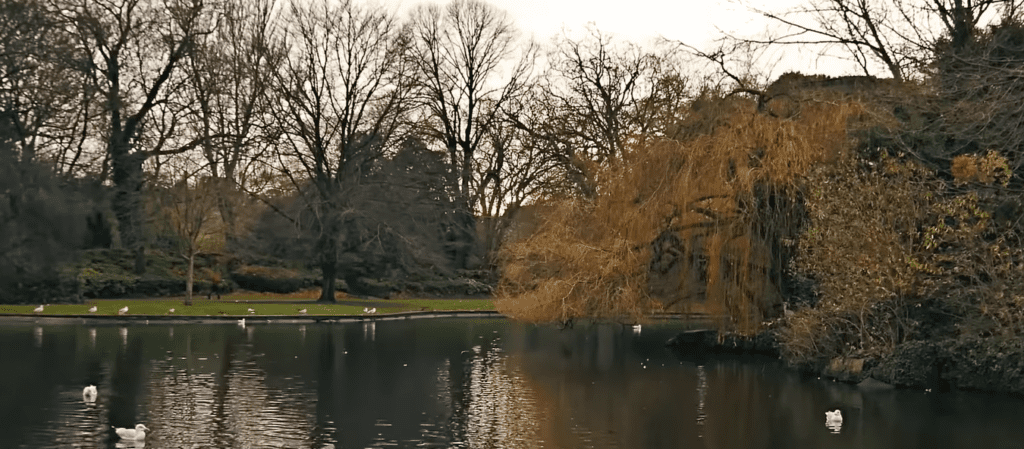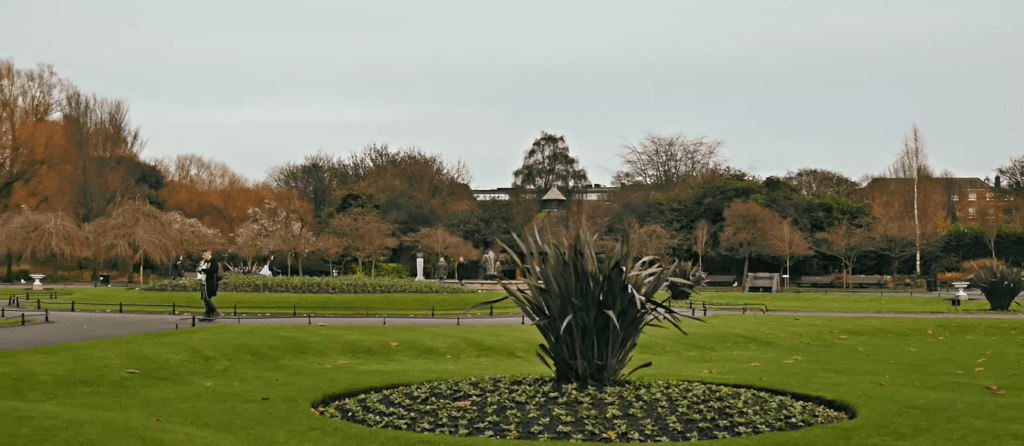St Stephen’s Green | Dublin, Ireland

Updated On: March 20, 2024 by Ahmed Samir
St Stephen’s Green is a place to go in Dublin, offering ample green spaces for jogging, observing wildlife, or even for some fresh air. The views of the gardens are just outstanding.
Dublin, the vibrant capital of Ireland, is a city steeped in history, culture, and charm. Among its many treasures, St Stephen’s Green stands out as a verdant oasis in the city’s heart. This 22-acre park is a beautiful natural space and a historical and cultural landmark that has significantly influenced the city’s evolution. This article will delve into St Stephen’s Green’s rich history, captivating features, and enduring charm.
Table of Contents
When to Visit St Stephen’s Green
The best time to visit St Stephen’s Green depends on your preferences and what you hope to experience. If you’re a fan of vibrant blossoms and mild weather, spring is an ideal time to visit when the park is adorned with colourful flowers and the weather is generally pleasant. Summer offers long sunny days, perfect for picnics and outdoor activities.
With its golden foliage, autumn is a photographer’s delight, creating a picturesque landscape. Even during winter, St Stephen’s Green maintains its charm, providing a serene escape from the city’s winter bustle, and the frost-covered trees can be quite enchanting. Ultimately, each season has its unique allure, making the park a year-round destination for visitors seeking tranquillity, natural beauty, and a touch of history in the heart of Dublin.
St Stephen’s Green: Dublin’s Timeless Sanctuary

St Stephen’s Green, known as “Cearnóg Stiabhna” in Irish, has a history that spans several centuries. Its story began in the 17th century when it was enclosed as a private park for the wealthy residents of the surrounding area. At that time, it was not accessible to the general public, and its primary purpose was to serve as a recreational space for the elite.
However, the park’s exclusivity lasted only for a while. In the 19th century, as Dublin grew and expanded, public demand for accessible green spaces increased. In response, the park was opened to the public in 1880. This decision marked a significant turning point in the park’s history as it transitioned from a private garden to a beloved public amenity.
Design and Layout
St Stephen’s Green owes its delightful appearance to the work of renowned Victorian architect Sir A. E. Guinness, who undertook a comprehensive redesign of the park in the mid-1800s. The result is a harmonious blend of formal and informal elements, making it an enchanting place to visit.
One of the park’s most striking features is its layout, characterized by winding pathways, carefully manicured lawns, and an ornamental lake. The paths are lined with lush trees, including oak, beech, and horse chestnut, providing visitors shade and a sense of tranquillity. These well-planned pathways are perfect for strolls, jogging, or finding a peaceful spot to read a book.
The lake’s resident waterfowl adds to the park’s charm. Swans glide gracefully across its surface, and ducks and geese waddle along the banks, delighting both young and old. The ornamental bridge that crosses the lake is a favourite spot for photographers and couples alike, providing a picturesque backdrop for cherished memories.
Statues and Monuments
St Stephen’s Green is not just a haven of natural beauty but also home to an array of statues and monuments that pay tribute to Ireland’s rich history and culture. One such monument is the Fusilier’s Arch, a prominent landmark at the Grafton Street entrance to the park. This grand arch was erected in 1907 as a tribute to the Royal Dublin Fusiliers who fought and died in the Second Boer War (1899-1902).
The park is also adorned with statues of famous Irish figures. The most notable of these is the statue of Theobald Wolfe Tone, a leading figure in the Irish Republican movement in the late 18th century. Another significant statue is that of Sir John Gray, a prominent Irish physician and newspaper proprietor who made substantial contributions to public health and journalism in Dublin.
St Stephen’s Green: A Pivotal Site in Dublin’s Past
Beyond its aesthetic beauty and cultural significance, St Stephen’s Green holds a special place in Irish history. During the Easter Rising of 1916, the park became a focal point for the rebellion against British rule. Rebels occupied the park and used the buildings around it as vantage points. The British army soon surrounded the park, leading to a week-long siege.
The bullet holes that still mar the Fusilier’s Arch serve as a poignant reminder of the events that transpired during that tumultuous time. Today, the park features an exhibition near the Grafton Street entrance that tells the story of the Easter Rising and its impact on the park and the city.
The Enchanted Transformation Through the Seasons
St Stephen’s Green transforms with the changing seasons, offering visitors a unique experience throughout the year. The park comes alive in spring with vibrant blossoms, including daffodils, tulips, and cherry blossoms. These bursts of colour create a captivating spectacle and attract photographers, artists, and nature enthusiasts.
Summer brings long, sunny days perfect for picnics on the lawns, while autumn sees the trees adorned with golden leaves, creating a breathtaking tapestry of colours. Even in winter, the park maintains its charm, with frost-covered branches and a quiet serenity contrasting with the bustling city streets beyond its borders.
Recreation and Activities

St Stephen’s Green provides many recreational opportunities for locals and tourists alike. The park’s well-maintained pathways are ideal for jogging and walking, and the open lawns offer space for picnics, sunbathing, and games of frisbee or football.
For families, the park has a dedicated children’s playground where kids can enjoy swings, slides, and climbing equipment. There is also a garden for the visually impaired, designed to engage the senses through touch, scent, and sound.
The park hosts various events and performances throughout the year, including open-air concerts, art exhibitions, and cultural festivals. It’s worth checking the park’s official website or local listings to see what’s happening during your visit.
A Sanctuary in the City
One of the most remarkable aspects of St Stephen’s Green is its ability to transport visitors away from the urban hustle and bustle despite being situated right in the heart of Dublin. The park offers a respite from the noise and chaos of the city, making it an ideal place for relaxation and contemplation.
Whether you’re seeking a peaceful spot to read a book, enjoy a leisurely picnic, or simply take a break from sightseeing, St Stephen’s Green has something for everyone. Its tranquil ambiance and natural beauty provide a soothing backdrop for moments of solitude or connection with loved ones.
Practical Information
St Stephen’s Green is conveniently located in the centre of Dublin, making it easily accessible from various parts of the city. Grafton Street borders the park to the east, St Stephen’s Green West to the south, and Merrion Row to the west.
The park is open to the public year-round, with no admission fee. Opening hours vary depending on the season, with longer hours in the summer and shorter hours in the winter. It’s advisable to check the official website or local information for the most up-to-date opening times.
Visitors to the park can enjoy facilities such as public toilets, benches, and a café for refreshments. The park is wheelchair accessible, with ramps and paved pathways throughout.
Conclusion
St Stephen’s Green is not just a park but a living testament to Dublin’s history, culture, and natural beauty. Its evolution from a private garden to a public sanctuary reflects the changing dynamics of the city itself. Today, it is a cherished space for Dubliners and a must-visit destination for tourists seeking tranquillity amidst the city’s vibrant energy.
St Stephen’s Green has something to offer, whether you’re interested in history, art, nature, or a peaceful place to relax. As you stroll along its meandering pathways, take in its statues and monuments, and savour its seasonal beauty, you’ll discover why this park holds a special place in the hearts of Dublin’s residents and why it continues to enchant visitors worldwide. St Stephen’s Green truly is Dublin’s green oasis, a sanctuary of beauty and history nestled in the heart of this vibrant Irish capital.
FAQs
Are there any guided tours of the park available?
While there may not be official guided tours, you can often find local tour companies offering walking tours of the area, including St Stephen’s Green. These tours can provide valuable insights into the park’s history and significance.
Can I have a picnic in the park?
Absolutely! St Stephen’s Green has spacious lawns perfect for picnics. Many visitors bring their food and enjoy a relaxing meal amid the greenery.
Are there any events or festivals held in St Stephen’s Green?
Yes, the park hosts various events throughout the year, including open-air concerts, art exhibitions, and cultural festivals. Check the official website or local listings for upcoming events during your visit.






